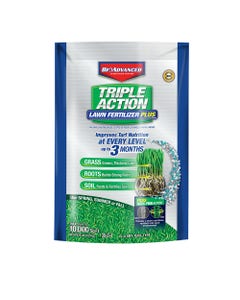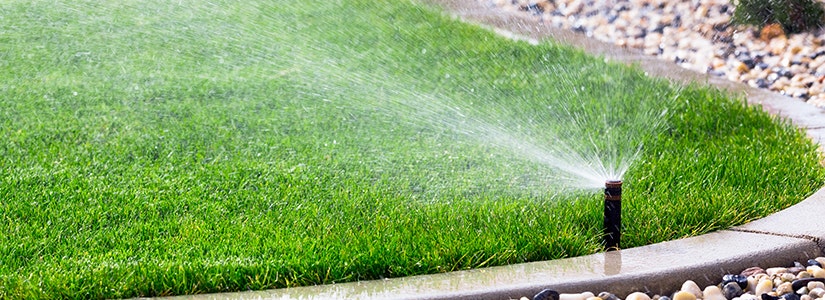

- Home
- Solution Center
- Learn
- Lawn and Landscape
- What To Look For In A Fertilizer
What To Look For In A Fertilizer
Start With The Necessary Nutrients
Lawn grasses need both macronutrients and micronutrients for healthy growth, although not all are commonly found in lawn fertilizers. Some nutrients are already present in the soil in sufficient amounts for healthy growth. The guaranteed percentages of specific nutrients contained in any fertilizer are listed on the front of the package.
Macronutrients
The elements nitrogen, phosphorous and potassium are needed in larger quantities than micronutrients.
Nitrogen (N) is the most important element in lawn fertilizers and is needed by lawn grasses in much higher amounts than any other nutrient. Nitrogen promotes healthy, green growth and a vigorous, dense turf. Without it, your lawn will turn yellow, thin out and be invaded by weeds.
Nitrogen fertilizers come in two basic forms – fast-release and slow-release. Most lawn fertilizers include a mix of fast-release and slow-release forms to provide quick green-up and sustained growth.
Fast-release nitrogen (often referred to as water-soluble nitrogen or WSN) such as urea and ammonium sulfate, is readily available and absorbed quickly by the grass, resulting in fast green-up. Unfortunately, it can also can burn your lawn if applied improperly, and can leach through the lawns root zone or run off the lawn in heavy rain, causing pollution.
Slow-release nitrogen (often referred to as WIN or water-insoluble nitrogen), such as sulfur-coated urea, methylene urea and animal manures, are released more slowly to the grass and provide more sustained, even growth – up to 3 months for methylene urea.
Phosphorous (P) promotes healthy roots and is especially important in establishing new lawns. In fertilizers, it is provided in phosphate form (P2O5). Phosphorous does not leach through the soil as regularly as nitrogen and, in some soils, it is already available in sufficient amounts for healthy turf. However, phosphorous can run off lawns in heavy rain or irrigation and pollute waterways. Consequently, some areas outlaw its use in lawn fertilizers.
Potassium (K), available in most fertilizers as potash (K2O4), promotes disease resistance, hardiness and wearability. It is available in most soils, so it's only applied in small amounts, but can be very important for lawns growing in sandy soils.
Micronutrients
These are needed in much smaller amounts than macronutrients, but can be very important in certain soil types. Here are important micronutrients that can be a benefit in lawn fertilizers.
Iron (Fe) is important for chlorophyll formation, photosynthesis and nitrogen metabolism. It helps provide the deep green color to turf. Deficiencies may show as chlorosis (yellowing) of the leaves.
Manganese (Mn) promotes root elongation and lateral root formation. Manganese-deficient lawns have reduced rates of photosynthesis, reduced root and shoot growth rate, and a higher incidence of disease outbreaks.
Zinc (Zn) is responsible for enzyme activation, chlorophyll formation, growth hormone regulation, cell growth and seed formation. Warm-season grasses depend on activity of a zinc-containing enzyme to grow well under high temperatures.
Copper (Cu) is necessary for carbohydrate and nitrogen metabolism. It is also essential for photosynthesis and a component of certain enzymes. Inadequate copper results in stunting of turf growth. Copper also is required for cell wall strength and prevention of wilting.
Other Helpful Ingredients
Bio-active ingredients (beneficial microorganisms), such as BioAdvanced’s Micro-Feed Action™, can help improve nutrient uptake during and between feedings, improve and fortify roots and increase resistance to heat and drought.





